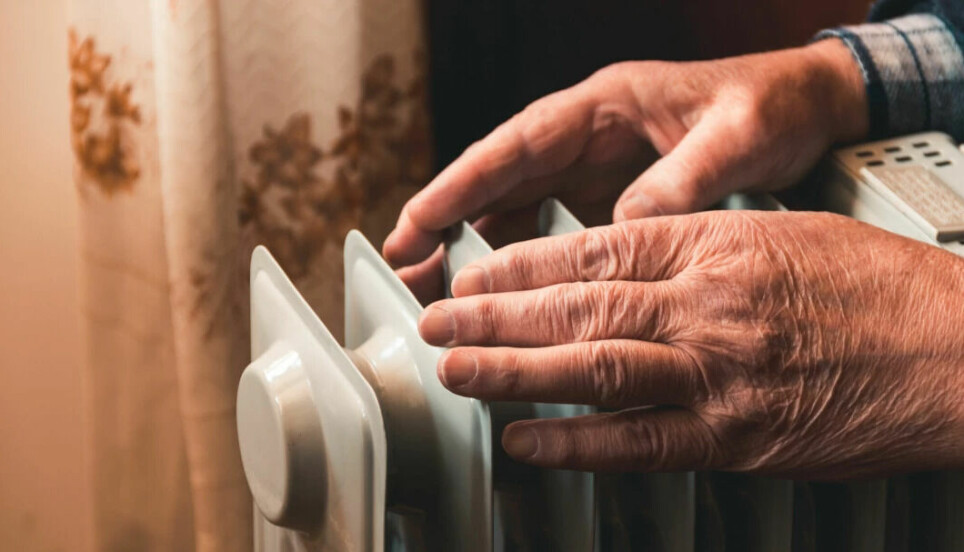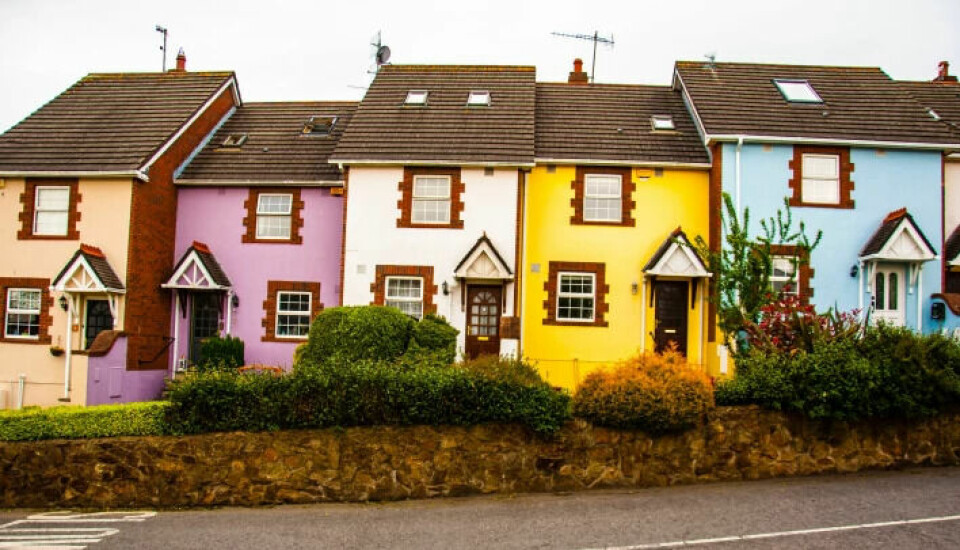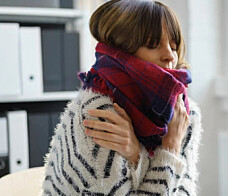
A cold house can be harmful to your health
More people die in the winter than during summer. The elderly should keep at least one room in their house at 24 degrees or warmer, professor advises.
In Norway we like to wear t-shirts inside, even in the middle of winter. And until quite recently, electricity prices have been low enough that most of us have been able to do so.
Now, however, much is changing. The energy crisis in Europe and periods of sky-high electricity prices here in Norway have led many to consider lowering the temperature in their living rooms.
But is this healthy for us?
If you are young and healthy, you can probably cope with a slightly cold house. But the elderly and those at risk of heart disease should keep the temperature higher in certain rooms, researchers advise.
You can read the researchers’ list of advice further down in the article.
Dangerous winter
According to Johan Øvrevik, we do not know for sure how indoor temperature affects health. He is a researcher at the Division of Climate and Environmental Health at the Norwegian Institute of Public Health, and professor at the University of Oslo.
But there are some signs which indicate that low indoor temperature has an impact on health.
One of them is the paradox surrounding the phenomenon we call excess winter mortality.
Influenza and heart disease
More people die in the winter than during summer.
Some of these deaths are due to increased mortality from influenza in the winter season. There is good reason to believe that the temperature plays a role here, Øvrevik notes.
The dry, cold winter air can inhibit the immune system.
“When you breathe in cold air, you get less blood flow in your nose, and thus fewer immune cells that can fight infections,” he says.
The dry air can also dry out the mucous membranes, which contributes to individuals being more easily infected by viruses. Additionally, it seems that viruses such as influenza and SARS-CoV-2 survive longer in dry air, so the risk of infection increases.
However, influenza only explains a minor part of excess winter mortality. Another significant cause is cardiovascular disease.
North-South paradox
“Most people who die of heart disease in Norway are over 65. On average, 1,800 people die during summer months such as June, while the figure for January is a whopping 2,500,” James Mercer says. He is professor emeritus at the Arctic University of Norway (UiT).
He has been interested in this phenomenon for decades.
Excess winter mortality is well known throughout Europe. But the paradox is that the problem does not hit hardest where the winter is coldest. On the contrary.
“The difference in mortality between summer and winter is smallest in Norway, Finland and the other Scandinavian countries. It is greatest in southern European countries such as Malta, Portugal and Cyprus, where winters are mild,” Mercer says.
This indicates that the indoor temperature is important, both Mercer and Øvrevik argue.
Compared houses in Tromsø and Dublin
The difference is likely due to housing standards.
Norwegian houses are generally built to keep the cold out. They are well insulated and have efficient heating systems, such as heating cables in bathrooms.
A few years ago, Mercer did a study of indoor temperatures in the homes of elderly people in Tromsø in Northern Norway and Dublin in Ireland.
The researchers installed devices to measure the temperature in all living spaces in 25 houses in each city. They recorded the temperature every two hours throughout the year.
The results showed big differences.

13 degrees in the bathroom
“In Tromsø, the temperature in living rooms was 22 to 23 degrees all year round, while in Dublin it was an average of 20 degrees,” Mercer says.
And in several of the other rooms it was significantly worse.
“In Irish kitchens the temperature was as low as 15 to 16 degrees in winter. The bathrooms in Tromsø maintained 23 to 24 degrees, while in Dublin the bathroom temperature was as low as 13 degrees in winter,” he says.
In Norway, indoor temperatures remained consistent throughout the year, while there was a large variation between summer and winter in Ireland.
The exception was bedrooms. Bedrooms in Tromsø were around 14 degrees, while the temperature was 16 to 17 degrees in Dublin bedrooms.
“Norwegians like to sleep with the window open and have appropriate bed linen. In Ireland it is the opposite,” Mercer says.
Several signs point to indoor climate
We do not know for sure whether these conditions are the cause of significantly higher excess winter mortality in Ireland and many other countries than in Scandinavia. But several signs point in that direction, in addition to the disparity in excess winter mortality in different countries.
In the 1950s, for example, there was a major change in the heating of homes in Great Britain and Ireland, Mercer points out.
“They started using central heating in their homes, which had a big impact on mortality,” he says.
Another indication is the population of one of the world's coldest cities, Yakutsk in Siberia, Mercer believes.
It has extremely low outdoor temperatures for large parts of the year, and the average temperature in January is below minus 40 degrees. Nevertheless, the inhabitants have almost no increase in cardiac deaths in winter.
They have comfortable indoor temperatures and are very good at dressing appropriately when they go out.
Mostly applies to those over 65
It is primarily older people who are at greater risk of death when the cold sets in, which may have physiological explanations.
As we age, changes occur in the body that make it more difficult to cope with low temperatures, Mercer states.
“We have reduced metabolism and muscle mass, and many have less body fat. Furthermore, we are often less active and have a reduced ability to tremble. Some older people also have less sensitivity to cold. They don't really notice that they are getting cold,” he says.
Previous research shows that older people have a slightly lower skin temperature than younger people. In experiments where the hands and feet are cooled down in a controlled manner over a short period, the elderly take longer to regain their warmth.
Blood pressure and cholesterol
Other changes that increase the risk of heart disease also occur.
Blood pressure becomes higher, and the levels of cholesterol and triglycerides in the blood increase. Research has shown that these risk factors vary throughout the seasons and are worst in winter.
“When you are cold, the blood vessels in the surface of the skin, especially in the legs and arms, will constrict to keep the heat in the important internal organs,” Johan Øvrevik says.
This means your blood also has less places to travel to, which raises your blood pressure.
A Japanese study from 2019 showed that low indoor temperatures led to higher blood pressure, especially in older men. If you already have high blood pressure, a cold indoor climate could be what pushes your heart over the edge.
“Worrying”
The two researchers do not want to scare anyone.
“Most younger, healthy people will tolerate low indoor temperatures just fine,” Øvrevik says.
When it comes to the elderly, the matter is different. It is important to be aware that too low an indoor temperature can be problematic, especially if it falls below 18 degrees. Older people and people with cardiovascular diseases therefore need to make sure that their indoor climate is not too cold.
“One can imagine that several pensioners are considering keeping it cold to save electricity. This is quite worrying,” he says.
Mercer generally thinks it's a good idea to save some energy use by lowering the temperatures a little in Norwegian homes. But not too much.
He fears that too much ‘electricity saving’ could make Norway more like Ireland and the other countries with greater differences in mortality between summer and winter. This is not desirable.
Advice for the elderly – and one for younger people about to go out into the cold
Mercer recently presented some clear advice to the elderly in a brochure in collaboration with the organisation Lions Club in Varanger:
- Keep an indoor thermometer.
- If you feel cold, it's cold, no matter what the thermometer shows. Get dressed and turn up the heat.
- Keep at least one room in the house – for example the living room – really warm. Preferably 24 degrees or more.
- Keep the temperature high in the bathroom, where you are often lightly dressed.
- Feel free to keep it cool in the bedroom, but make sure you have appropriate, warm bed linen.
- Keep moving, it increases your body temperature and maintains muscle mass.
- Dress well. Several thin layers of clothing are better than one thick layer.
- Eat hot food and drink hot drinks.
- Avoid alcohol. A toddy can be experienced as warming, but in reality causes the blood vessels to open so you lose heat.
Finally, Mercer offers a bit of advice for young people as well.
“Avoid using snuff and tobacco if you are going to be out in the cold. Nicotine has the ability to expand the blood vessels, so that you lose heat, for example from your hands and feet,” he says.
———
Translated by Alette Bjordal Gjellesvik.
Read the Norwegian version of this article on forskning.no



































